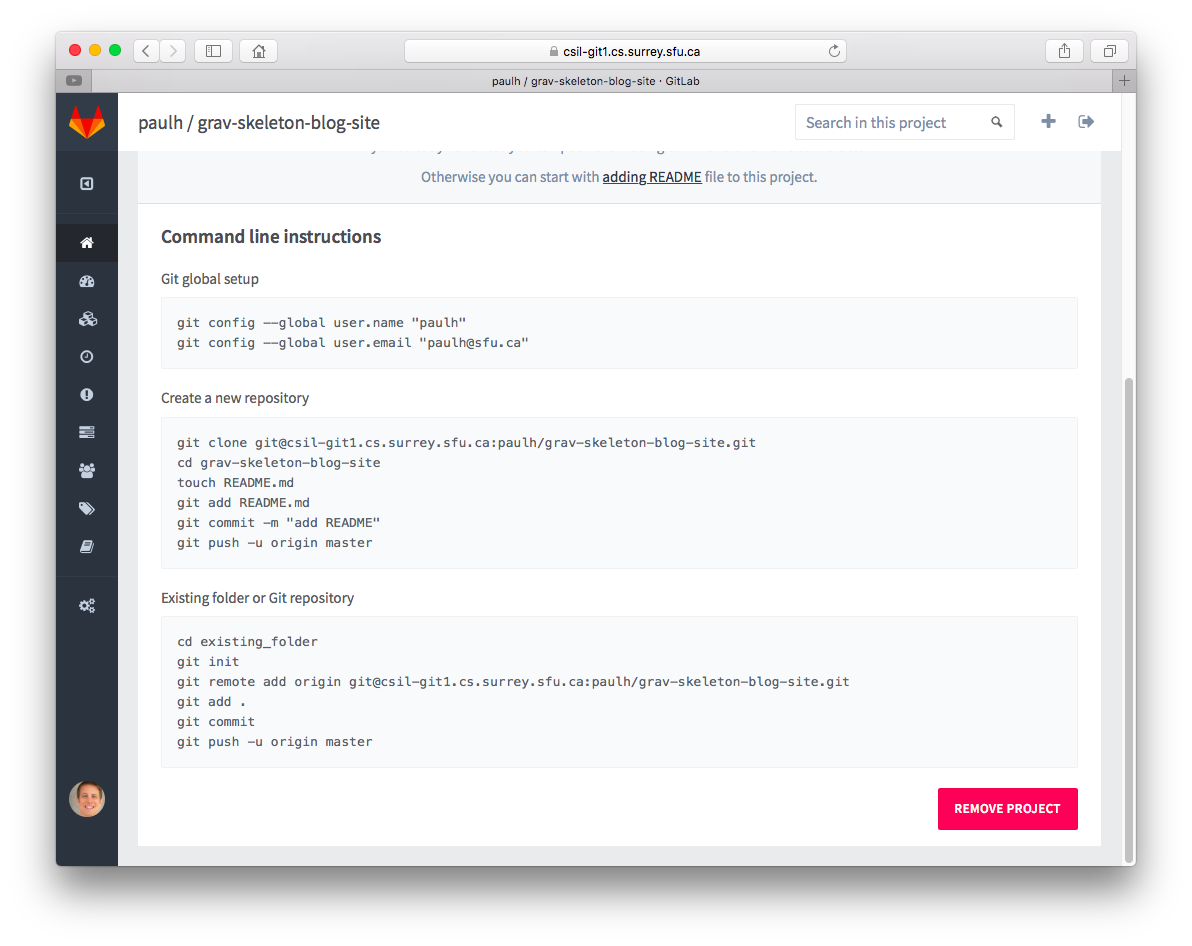
- HOW TO CLONE IN GITLAB FOR MAC HOW TO
- HOW TO CLONE IN GITLAB FOR MAC INSTALL
- HOW TO CLONE IN GITLAB FOR MAC CODE
- HOW TO CLONE IN GITLAB FOR MAC PASSWORD
- HOW TO CLONE IN GITLAB FOR MAC DOWNLOAD
You can fork any project you have access to. To use the repository in the examples on this page: You can use any project you have permission toĪccess on or any other GitLab instance. You can read more on how Git manages configurations in theīefore you begin, choose the repository you want to work in. If you omit -global or use -local, the configuration applies only to the current The -global option tells Git to always use this information for anything you do on your system. You can determine if Git is already installed on your computer by opening a terminal On the Windows taskbar, select the search icon and type cmd. You can integrate it with Zsh and Oh My Zsh for color highlighting and other advanced features. Press ⌘ command + space and type terminal. Prompt, command shell, and command line). To execute Git commands on your computer, you must open a terminal (also known as command
HOW TO CLONE IN GITLAB FOR MAC INSTALL
To help you visualize what you’re doing locally, you can install a
HOW TO CLONE IN GITLAB FOR MAC CODE
HOW TO CLONE IN GITLAB FOR MAC DOWNLOAD
If you’re new to Git and want to learn by working in your own project,įor a quick reference of Git commands, download a Git Cheat Sheet.įor more information about the advantages of working with Git and GitLab: Like fixing complex merge conflicts or rolling back commits. However, the command line is required for advanced tasks, You can do many Git operations directly in GitLab. Git is an open-source distributed version control system.
HOW TO CLONE IN GITLAB FOR MAC PASSWORD
If our local backups are connected via SSH, then we are not very interested in this password change and the connection to the remote repo will still be established as long as we have the correct key pair.ĭespite the fact that setting up an SSH connection requires a bit more work from us than the usual clone via HTTPS, it is still worth doing whenever we care about the security and protection of data in our repository. For example, the company, for security reasons, forces the GitHub password to be changed once a month. It allows you to use the terminal on Windows systems in the same way as in the Unix system family.Īnother benefit is that SSH keys are unlikely to be changed often, and certainly not as often as passwords.
HOW TO CLONE IN GITLAB FOR MAC HOW TO
I will show you how to do it using this project:. In this case, we need to install some external tool that will enable us to work with this protocol. Unix systems have a built-in SSH module, while Windows, unfortunately, does not. Also, the principle of operation is very similar on each of these portals, so I will focus only on GitHub today as after that article you will be able to handle this process for other services on your own.īefore we try to do this, we first need to generate the aforementioned pair of keys.

We can quite easily establish such a connection for GitHub, GitLab, and Bitbucket. To establish such a connection, we need a pair of keys: private (saved on our computer’s hard drive) and public, shared with the service we want to connect to. Importantly, such connections are encrypted. Secure SHell SSH is a communication protocol that enables a remote terminal connection, e.g. What is SSH?įirst, we need to know what SSH is to understand why we can clone repositories with it. It explains the principles of clone operation and further reading will be easier if you first understand the basics and the idea of cloning. I also encourage you to read this article: How to clone a repository. And this is what you will learn from this article – what is SSH and how to use it in our Git repositories. On the other hand, it turns out that not everyone uses appropriate security measures, or sometimes we just don’t know how to do it.

Each of us is aware of the importance of security in the IT world.


 0 kommentar(er)
0 kommentar(er)
